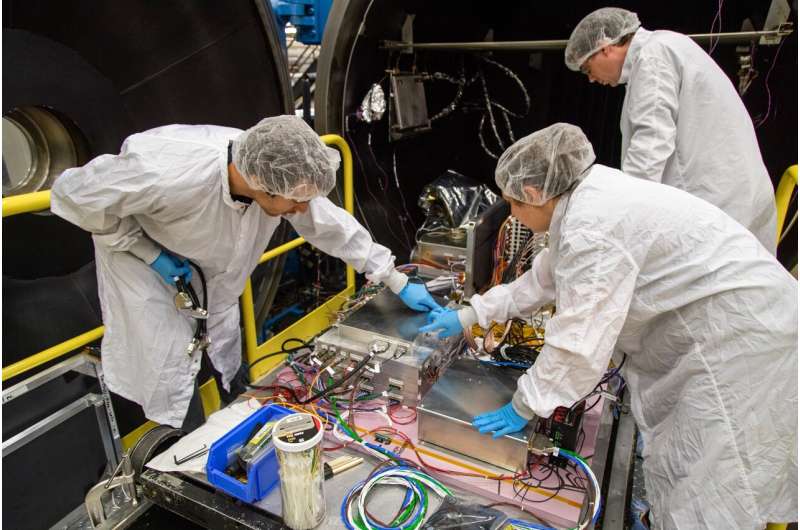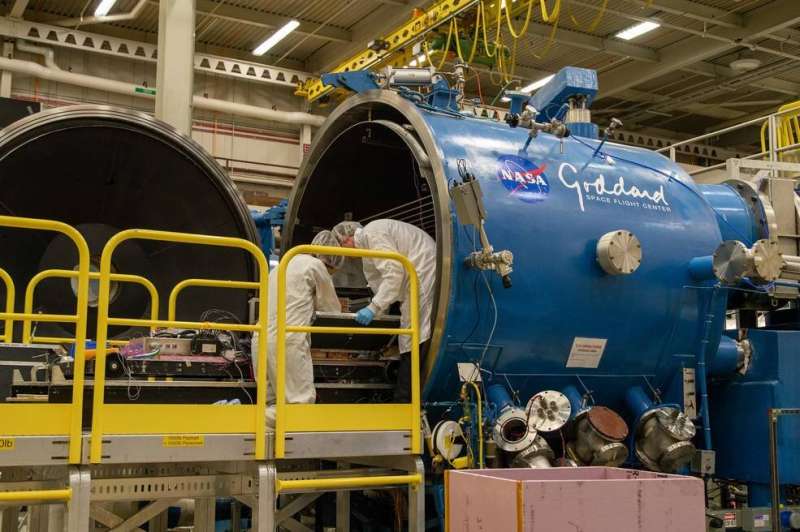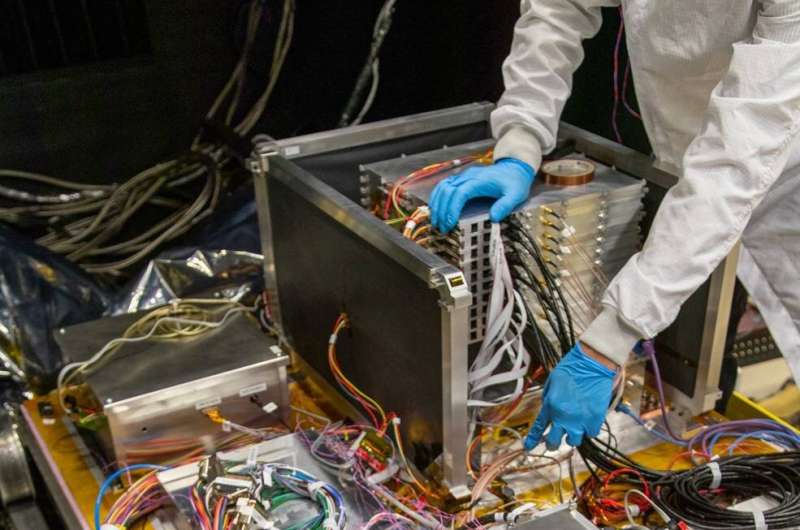NASA’s ComPair gamma-ray hunting mission prepares for balloon flight

Engineers and scientists have shipped NASA’s ComPair instrument to Fort Sumner, New Mexico, ahead of its scheduled August flight early in NASA’s 2023 fall balloon campaign.
ComPair’s goal is to test new technologies for studying gamma rays, the highest-energy form of light. It was assembled and tested at NASA’s Goddard Space Flight Center in Greenbelt, Maryland.
“The gamma-ray energy range we’re targeting with ComPair isn’t well covered by current observatories,” said Carolyn Kierans, the instrument’s principal investigator at Goddard. “We hope that after a successful balloon test flight, future versions of the technologies will be used in space-based missions.”
ComPair is designed to detect gamma rays with energies between 200,000 and 20 million electron volts. (For comparison, the energy of visible light is 2 to 3 electron volts.) Supernovae and gamma-ray bursts, the most powerful explosions in the cosmos, glow brightest in this range, as do the most massive and distant active galaxies, which are powered by supermassive black holes. Scientists know this because they see a fraction of the light emitted by these galaxies with NASA’s Fermi Gamma-ray Space Telescope, which observes higher-energy gamma rays.

ComPair gets its name from the two ways it detects and measures gamma rays: Compton scattering and pair production. Compton scattering occurs when light hits a particle, such as an electron, and transfers some energy to it. Pair production happens when a gamma ray grazes the nucleus of an atom. The interaction converts the gamma ray into a pair of particles—an electron and its antimatter counterpart, a positron.
The ComPair instrument has four major components:
- A tracker containing 10 layers of silicon detectors that determines the positions of incoming gamma rays
- A high-resolution calorimeter that precisely measures lower-energy Compton-scattered gamma rays
- Another calorimeter that measures the higher-energies of electron-positron pairs
- An anticoincidence detector that notes the entry of high-energy charged particles called cosmic rays, allowing ComPair’s other instruments to ignore them

The mission team assembled all the components and tested them in a large thermal vacuum chamber at Goddard to assess how they’ll function at balloon altitudes. The next step is to fly the instrument. The flight will carry ComPair to a height of about 133,000 feet (40,000 meters), or nearly four times the cruising altitude of a commercial airliner.
ComPair will piggyback with one of the primary balloon payloads that will fly during NASA’s annual Fort Sumner balloon campaign. NASA’s scientific balloons offer frequent, low-cost access to near-space to conduct scientific investigations and technology maturation in fields such as astrophysics, heliophysics, and atmospheric research, as well as training for the next generation of leaders in engineering and science.
ComPair is a collaboration among Goddard, the Naval Research Laboratory in Washington, Brookhaven National Laboratory in Upton, New York, and Los Alamos National Laboratory in New Mexico.
Citation:
NASA’s ComPair gamma-ray hunting mission prepares for balloon flight (2023, July 20)
retrieved 20 July 2023
from https://phys.org/news/2023-07-nasa-compair-gamma-ray-mission-balloon.html
This document is subject to copyright. Apart from any fair dealing for the purpose of private study or research, no
part may be reproduced without the written permission. The content is provided for information purposes only.
For all the latest Science News Click Here
For the latest news and updates, follow us on Google News.

